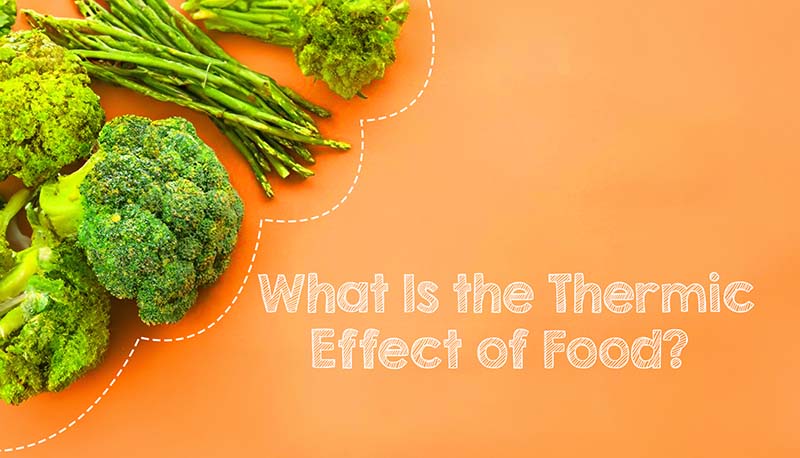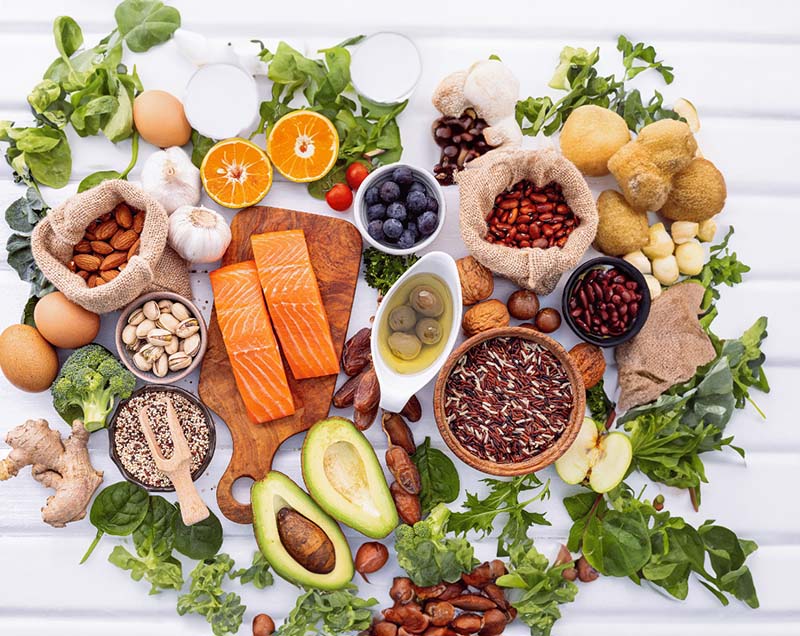Looking to ramp up your metabolism? Turn your attention to the thermic effect of food! The Thermic Effect of Food (TEF) is the rise in metabolic rate following food consumption. In this article, we’ll explore the concept of TEF, its mechanisms, and how you can leverage it by incorporating foods with high thermic effect into your diet.
1. What Is the Thermic Effect of Food?
The Thermic Effect of Food (TEF) refers to the boost in your metabolism that happens when you consume food. Often called “food-induced thermogenesis,” this process is your body’s way of using energy to handle everything it takes to digest, absorb, and distribute the nutrients from your food. Essentially, TEF represents the energy your body expends to process and make use of the nutrients in what you eat.

2. How Does the Thermic Effect of Food Work?
The Thermic Effect of Food kicks into action by ramping up your metabolic rate following a meal. This rise in metabolism is all about the energy your body needs to digest, absorb, and distribute the nutrients from your food. Interestingly, the impact varies across different macronutrients.
Protein sits at the top with the highest thermic effect, trailed by carbohydrates, and then fats. In simpler terms, your body expends more calories to break down and assimilate protein compared to what it uses for carbohydrates or fats.
3. The Connection Between Your Metabolism and Your ATP
The energy your body uses at the start of metabolism is linked to the energy produced after your body breaks down nutrients. This provides an important ratio that helps determine the thermic effect, or the amount of energy your body uses to process food.

In simpler terms, eating food doesn’t directly burn fat. It’s more about how much energy your body needs to digest and absorb the food that decides if it can help burn calories through diet-induced thermogenesis.
Also, it’s good to know that some foods help with breaking down fat (a process called lipolysis), while others don’t.
4. The Role of Insulin in Metabolism
Insulin is a key hormone in your body, responsible for moving glucose into your cells to be used for energy and for keeping your blood sugar levels in check.
However, insulin also plays a role in fat storage, which makes its effects somewhat contradictory. Foods that trigger a high release of insulin generally lead to more fat storage because they block the breakdown of fat, known as lipolysis.

But here’s an important point: insulin alone doesn’t cause weight gain unless you’re consuming more calories than your body needs. Primarily, your body uses food for energy, but excess intake leads to fat storage.
In conclusion, while the Thermic Effect of Food can assist in fat loss by slightly boosting metabolism, its overall impact on weight management is relatively minor.
5. What Factors Influence the Thermic Effect of Food?
Several factors are known to impact the thermic effect of food, which is how your body burns energy during digestion:
- Age: As you get older, the thermic effect of food tends to decrease.
- Physical Activity: Being physically active boosts the thermic effect of food, regardless of age or body composition.
- Meal Size: Larger meals lead to a greater thermic effect compared to smaller ones.
- Meal Composition: Meals rich in carbohydrates, especially those high in fiber, tend to have a higher thermic effect than those high in fats, particularly saturated fats. Meals with more protein also have a greater thermic effect than those with less protein.
- Meal Frequency: Eating the same amount of food in one large meal, rather than spreading it out over several smaller meals or snacks, can increase the thermic effect.
- Food Processing: Minimally processed foods, like whole grains, have a higher thermic effect compared to heavily processed foods, such as refined grains.
Understanding these factors can guide you in making dietary choices that enhance the thermic effect of food. For instance, incorporating more physical activity into your routine, choosing meals with higher fiber and protein, and opting for less processed foods can positively influence your body’s energy expenditure during digestion. Remember, a balanced approach combining these elements is key for optimal metabolic health.
6. 10 Foods with High Thermic Effect to Support Healthy Metabolism
Exploring a list of foods with high thermic effect is a fantastic way to rejuvenate your metabolism. Here are our top 10 recommendations that can help accelerate your metabolic rate:
6.1 Protein-Rich Foods
Opt for lean proteins like chicken, fish, eggs, tofu, and legumes. They require more energy to digest than fats and carbs, leading to higher calorie burn during digestion. Plus, they’re essential for building and maintaining muscle mass, which boosts your metabolism.
6.2 Spicy Foods & Chilies
Foods with a kick, especially chili peppers, are rich in capsaicin. This compound raises your body temperature and calorie burn. Adding a bit of spice to your meals isn’t just tasty; it can also rev up your metabolism.
6.3 Green Tea
Known for aiding weight loss, green tea’s metabolism-boosting abilities come from its high catechin content, particularly EGCG. These antioxidants help increase fat burning and enhance metabolic function. A cup of green tea with meals can aid digestion and metabolism.
6.4 Coffee
Coffee’s caffeine content is a natural stimulant that can temporarily increase metabolic rate. It does this by boosting adrenaline release, which helps burn more calories. However, moderation is key, as too much caffeine can have adverse effects.

6.5 Whole Grains
For carbohydrate needs, whole grains like quinoa, brown rice, and oats are ideal. They provide complex carbs for sustained energy, avoiding blood sugar spikes and crashes. Plus, the body uses more energy to digest these than refined carbs, boosting metabolism.
6.6 Healthy Fats
These fats are not just flavorful; they also enhance satiety and gut health. They support various metabolic functions, including nutrient absorption and immune function. Avocados, nuts, and olive oil are excellent sources of these beneficial fats.
6.7 Iron-Rich Foods
Iron is vital for transporting oxygen in the blood, crucial for an efficient metabolism. Incorporate iron-rich foods like lean meats, spinach, and beans into your diet to aid your metabolism.
6.8 Apple Cider Vinegar
Known for its numerous health benefits, apple cider vinegar can enhance metabolism by improving insulin sensitivity and lowering blood sugar levels. It may also promote fat burning and reduce appetite. A small amount before meals can boost digestion and metabolic efficiency.
6.9 Water
Essential for numerous metabolic processes, water can also increase calorie burning. Drinking cold water is especially effective, as the body burns calories to heat it to body temperature. Infusing water with metabolism-boosting ingredients like lemon or ginger adds extra benefits.
6.10 Herbs and Spices
Beyond flavor, certain herbs and spices like ginger, turmeric, and cinnamon offer metabolic advantages. They’re also anti-inflammatory and can improve insulin sensitivity.
7. Ways to Boost Your Metabolism
Boosting your metabolism can be easy with a few simple changes to your eating habits and lifestyle:
- Eat Protein with Every Meal: Foods raise your metabolism for a few hours after eating, and protein has the biggest effect. Protein uses more of its own calories for digestion compared to carbs and fats. Eating more protein also helps keep your metabolism steady when you’re losing weight, as it helps prevent muscle loss, which is common when dieting.
- Try High-Intensity Workouts: High-intensity interval training (HIIT) is about doing short, really intense bursts of exercise. This kind of workout is believed to boost your metabolism more than other types of exercise. Start with an exercise you know, like running or cycling.
- Get Enough Sleep: Not sleeping enough can mess with your hunger hormones and change how your body handles fat, possibly leading to weight gain. A study in 2019 found that not sleeping enough for several nights could slow down how you burn fat, but this can be fixed with a good night’s sleep.
- Drink Coffee: Coffee can give your metabolism a noticeable lift and help with weight loss. The effect varies from person to person. For example, research found that caffeine helped inactive people burn fat more during exercise than athletes.
8. Conclusion
In summary, our look at “Foods with High Thermic Effect“ should have shed light on how these foods naturally enhance metabolism, aiding your health and fitness goals. At Biosculpture, we’re dedicated to offering insights that improve understanding and guide dietary choices. We value your feedback and stories about how these thermogenic foods have influenced your health journey. For more tips on health, nutrition, and the thermic effect of foods, visit our Biosculpture blog. Join our community for continuous learning and growth in health and wellness!


